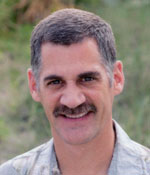
In all my years of flying F-15s, I almost never calculated takeoff and landing data. We often took off using military (MIL) power (without afterburners), and the engines could put out so much thrust that for almost every configuration and runway we operated from, we could essentially takeoff single engine, with afterburner (AB), from an initial speed of zero.
 One mission I had really pressed us to get airborne—the Air Force had sent an official photographer to take some airborne photos of a four-ship flying over Germany. We briefed as a five-ship. The F-15D two-seat photo ship took off first, followed in 10-second intervals by each of the next four jets. I took off last. This was during the time when NATO was switching from JP-4 jet fuel (F-40) to JP-8 (F-34). The inflight characteristics were pretty much the same, but lighting the afterburners on the takeoff roll was proving troublesome with the different fuel.
One mission I had really pressed us to get airborne—the Air Force had sent an official photographer to take some airborne photos of a four-ship flying over Germany. We briefed as a five-ship. The F-15D two-seat photo ship took off first, followed in 10-second intervals by each of the next four jets. I took off last. This was during the time when NATO was switching from JP-4 jet fuel (F-40) to JP-8 (F-34). The inflight characteristics were pretty much the same, but lighting the afterburners on the takeoff roll was proving troublesome with the different fuel.
Two of the four jets ahead of me had afterburner blowouts shortly after their brake release, as evidenced by the big ball of flame coming out the exhaust accompanied by a loud “whump.” They simply cycled their throttles back to MIL then forward again to MAX AB and were fine. When I released brakes and selected MAX AB, my right afterburner blew out so I cycled my throttles. This time my left afterburner blew out. I cycled my throttles again, but the left afterburner wouldn’t light and the right afterburner blew out. I elected to just take off in MIL power. By then I had eaten up 1,000 feet of runway. These blowouts had also put the electronic engine controls out of whack such that my turbine inlet temperatures were only 820 degrees Celsius—they should have been between 950 and 970 degrees Celsius. I saw this, but my brain really didn’t register the numbers at the time as I was in “go” mode. Besides, who aborts an F-15 during takeoff because of a lack of thrust?
Well I should have. I used 6,500 feet of the 8,000-foot runway to get airborne. Then I flew for two miles straight ahead, barely climbing, before I dared to start my turn. Once my airspeed reached about 250 knots the engines started to perk up. One at a time I tried the afterburners and everything was back to normal.
So, what is a reasonable approach to the takeoff go/no-go decision in our general aviation aircraft, particularly for the situation where the engine(s) may seem fine, and may even get you airborne, but you aren’t getting the thrust needed for continued safe flight? There is a rule of thumb that says, “You need to reach 71 percent of your liftoff speed at the halfway mark down the runway to continue the takeoff. Otherwise abort.” That may be fine for shorter runways, but on a 10,000-foot runway in a light aircraft with a liftoff speed of 60 knots, do you really want to be 5,000 feet down the runway at 43 knots (60 x 71 percent) and think things are okay?
A better approach is to read your aircraft’s pilot’s operating handbook and determine the expected takeoff roll for the given weight, winds, and density altitude—adjusted for your experience with your particular aircraft. Then calculate 71 percent of your liftoff speed to compare at half the expected takeoff roll.
Just because the engine is running doesn’t mean you should take off.
Larry Brown of Colorado Springs, Colo., is a retired Air Force F-15 pilot who is using the lessons he learned as a fighter pilot as a GA pilot in his Cessna P210. Brown, who has 2,600 hours total time during his 32 years of flying, also was an instructor pilot and flight examiner in the Air Force T-38 and instructor pilot in the T-52, the military’s version of GA’s Diamond DA40. See previous installments in the Fly like a fighter archive.



